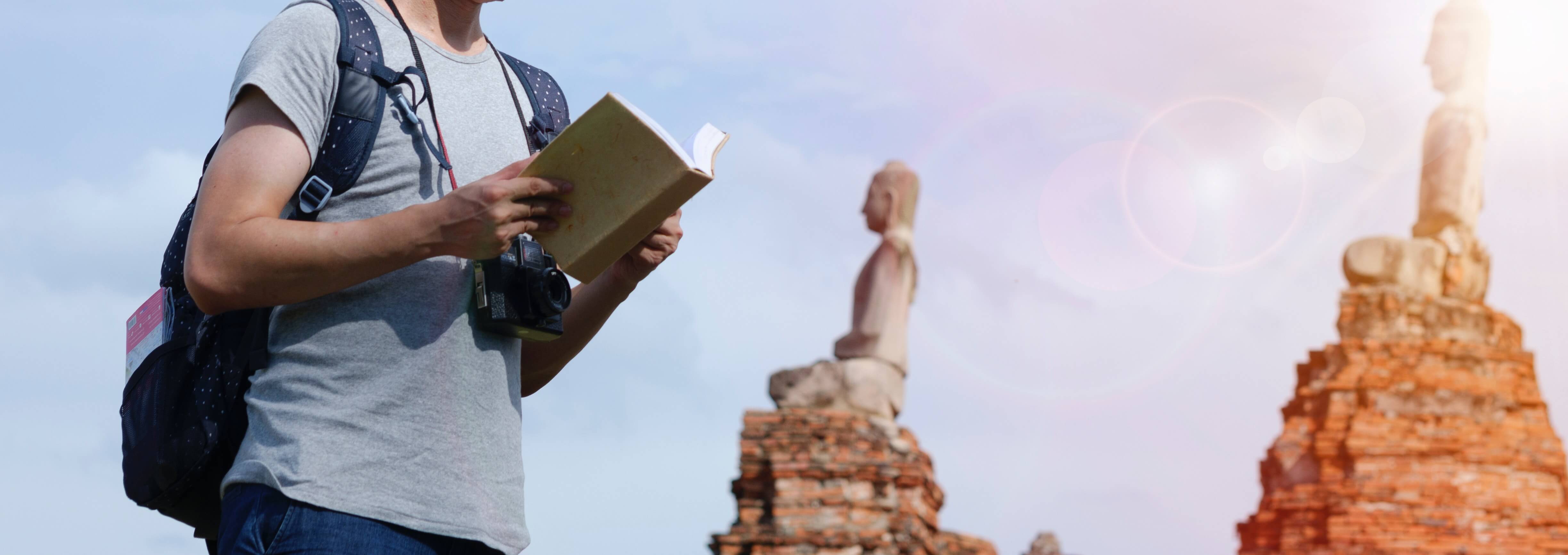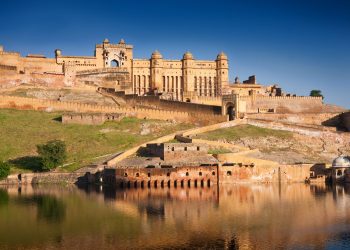
Everything about India: practical information before the trip
Continent Asia
Ideal place to practice yoga and meditation, India is a destination that surprises visitors. The country is full of a multitude of tourist sites as beautiful as the others. Discover Bollywood, the capital of Indian cinema and the many Hindus.
R:
SHOPPING
You will have the opportunity to bring many memories of India. For example, from cashmere silk to jewels, precious stones and sandalwood objects: the artisanal fan is wide, throughout the country.
Silver
The national currency is the Indian rupee (INR).
Exchange rate at 02/17/2014: INR 1 = EUR 0.0118, EUR 1 = INR 84.5330
Currencies can be exchanged at banks, exchange offices and airports. All international credit cards are accepted, but you should avoid paying for your credit card purchases outside of major retailers. Travelers checks in pounds sterling or US dollars are accepted everywhere.
B
Luggage
With Air France: 1 checked baggage of 23 kg and 1 hand luggage up to 10 kg
With Air India: 1 checked baggage of 30 kg and 1 hand baggage of 8 kg maximum
Domestic flights (1 checked baggage up to 15 kg, to see by the organization with the guide in place).
When picking up your checked luggage, if you notice that it has been damaged during transport, you must declare by completing the form provided for this purpose at the baggage claim counter BEFORE leaving the airport. Otherwise, the responsibility of the airline can no longer be questioned.
It is recommended to bring light clothes, sunglasses, cap, sunscreen, sneakers, wool morning and afternoon.
Women should dress discreetly / conventionally: avoid dockers, necklines, miniskirts and shorts.
DRINKS
It is better to drink mineral water. Chai (Indian tea) is the most popular drink in the country. Lassi, nimbu panu (lime juice), sugarcane juice, coconut juice … are other drinks to enjoy. Beer is consumed mainly in restaurants. There are several types: Foster, UB, Kock … In holy cities like Rishikesh, Varanasi, Pushkar or Haridwar, alcohol consumption is prohibited.
Budget
India is still a cheap destination. With a budget (accommodation, restaurant, departures …) per day between 15 and 75 euros, you can lead a pleasant life. A cheap hotel costs around 15 euros a day, while a luxury hotel will cost around 45 euros a day.
C
Change
Foreign currency exchanges (euros, US and Canadian dollars) can be made at banks, luxury hotels or exchange houses. It is better to go to the exchange offices because the service is fast. Traveler’s checks (American Express and Thomas Cook) are accepted more frequently.
CREDIT CARDS
Mastercard and Visa are the most used international payment cards in the country. They are accepted in luxury hotels, luxury restaurants and department stores.
Climate
Given the size of the country, India has three major seasons: warm, humid (monsoon) and fresh (the most suitable for traveling).
– The hot season: the shortest of the cycle. It begins gradually, at the end of March, with a regular warming of temperatures that remains very tolerable until mid-April. Beyond this period, mercury often crosses 35/40 ° C in Rajasthan and as we descend to the central regions of India.
– The wet season: climatic changes related to the arrival of monsoon winds begin to feel at the end of May, which makes the electric atmosphere difficult to bear. Heat, humidity and low pressures give rise to very short storms, gusts of winds laden with dust or sand (in Rajasthan, Madhya Pradesh).
– The cold season begins around October, when the monsoon ended in all regions. The end of the rains, when it occurs prematurely, as often happens in Rajasthan, during September, can be followed by a wet heat wave.
The cold season, which runs from October to March, is the best time of the year to travel to northern India. The months of December and January are marked by a significant temperature difference between day and night in western northern India (Delhi, Rajasthan, Gujerat), which sometimes causes light rain and morning fog. The eastern part has a less continental, more tropical climate.
Average day / night temperatures (in ° C):
North of Delhi: January 21/6; April: 36/20; July 35/27; October: 34/17
Madras (southeast coast): January 30/19; April: 35/26; July 37/26; October: 32/25
CUSTOMS
The Hindu greeting, Namaste, consists of joining hands and tilting the head forward.
Women do not like to shake hands.
The Indians eat with the right hand, the left is theoretically reserved for the private bathroom. You must take off your shoes before entering a place of worship or a mausoleum.
INDIAN KITCHEN
The taste and taste are ubiquitous, Indian cuisine captivates you with its varieties and colors. Typical dishes are: Chappati (bread), Biryani (mix of rice with chicken and spices), chicken curry (sauce made with chili peppers and then mixed with chicken), Daal (lentil soup) and a dozen other typical dishes of the country you must try absolutely. Dairy desserts and gulab jamuns are popular.
Drinks: tea is the national drink, then the star drink is, of course, the Lassi (yogurt, sugar and milk) that should be drunk at all costs.
D
TIME DIFFERENCE
In summer, Paris time + 3:30. In winter, Paris time + 4h30
Travel
Moving is not expensive. There are several means of transport to get around, such as train, plane, taxi, bus, bicycle, rickshaw …
AUTOMATIC INPUT DISTRIBUTORS (ATM)
ATMs can be found in major cities and areas of high tourist influx. These distributors generally accept payment cards Visa, Mastercard, Maestro and Plus, Cirrus … However, before going to India, you must inform your bank.
E
CASH
Having liquidity will allow you to buy in the market or on the street. It will also be useful when going to remote areas.
ELECTRICITY
230/240 volts, 50 Hz.
F
PROCEDURES
Passport valid for 6 months after the return date and visa obtained by us.
H Accommodation
In India, you can stay in cheap hotels, youth hostels or in
Luxury Palace In general, the cost of these places of accommodation is increasing during the high season (October to mid-February in the plains and from June to October in the climatic seasons), during the New Year and Christmas holidays. The cost of a cheap hotel varies between 7 and 15 euros. The average hotel is between 15 and 30 euros. The one of a hotel of superior category varies between 30 and 70 euros.
must
India is one of the most popular destinations for tourists. This country has a crowd
of tourist wonders. Examples include the Taj Mahal, New Delhi and its Red Fort, the Great Mosque, the National Museum, the city of Udaipur, Mombay, the Indian capital of fashion and finance, the Temples of Khajuraho, the city of Fatehpur Sikri, the city of Ahmenabad, the city of Pune, the caves of Ellora, etc.
L
Languages
The official language is Hindi. However, English is also widely spoken.
Leisure
With its many leisure activities, India is a very interesting destination for tourists. For example, they can practice yoga in temples. They can also ride elephants or camels. They can do safari, mountaineering, meditation, caving, etc. Boat trips are also very interesting. You can also go to henna tattoo sites, massage parlors or beauty salons to take advantage of the knowledge of India.
P
Tip
Leaving a tip is not an obligation. But you can give it to the tour guide, the taxi driver, the luggage manager. In restaurants, the 10% tip is spreading more and more.
S
HEALTH
Vaccines are not required for travelers from Europe. It must be updated for “universal” vaccines: diphtheria, tetanus, polio, hepatitis B.
Recommended prevention against malaria, but especially during the monsoon. What to do with your doctor.
Do not drink tap water, always buy mineral water. Take medicine for stomach pain.
Security
India is not a dangerous country. However, stay alert because scams are common. Do not go out with large sums of money and do not expose your valuables.
PHOTOS : Permission is needed to photograph protected monuments and nature reserves. The flash is not allowed during the visit of the monuments.
T
Phone
From France to India: 0091 + correspondent number. From India to France: 0033 + correspondent number.
Direct telephone lines, fax, radio, television and Internet are operational in most of the country.
TRAIN It is the perfect way to move around the country. It will be a good way to discover the landscape. Ticket reservations must be made in advance on the Indian Railway website http://www.indianrail.gov.in/ or through a travel agency, even if you have to pay a small commission. You can choose between “passenger” trains that mark stops everywhere and express trains that are main trains.
AIR TRANSPORT
The plane is a great way to move quickly in India. Today there are a multitude of low-cost companies that serve inland cities. For example, Go Air, JetKonnect, IndiGo Airlines, Jet Spice, Air India …
URBAN TRANSPORTATION
Bus : The bus is less comfortable. They have the advantage of going to all parts of the country. In addition, the rates are very affordable. You can choose between “ordinary”, “semi-deluxe”, “deluxe” and “super deluxe” buses.
Car rental : it will cost you between 20 and 40 euros per day. In addition, you must carry a driver.
Rickshaw : These are 2 or 3 wheel bikes with passenger seats. They are found mainly in small towns. It is better to negotiate the rate before going up.
Taxi : The vast majority of taxis have counters. You can also borrow prepaid taxis.




